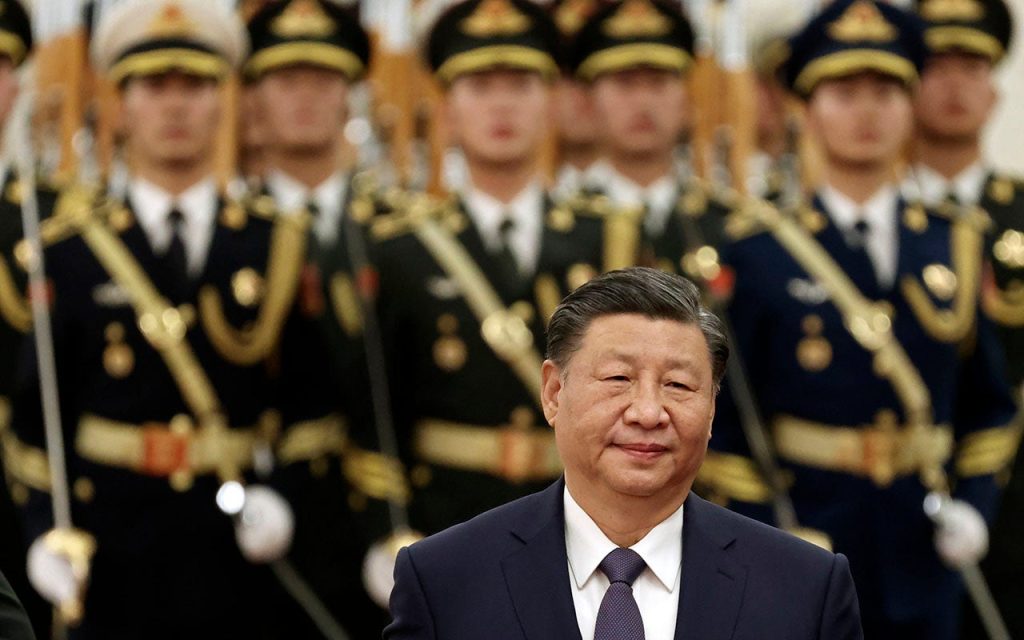China’s military expansion, as detailed in a recent Pentagon report, is raising alarms among experts who compare its scale and pace to that of Nazi Germany in the 1930s. This build-up encompasses a rapid expansion of nuclear capabilities, naval power, and advanced weaponry like hypersonic missiles, coupled with a focus on sophisticated psychological warfare techniques. While Hitler’s focus was primarily on land forces, China’s expansion extends across all military domains, posing a multifaceted challenge to the existing global power balance, particularly for the United States. Experts warn that the U.S. has been preoccupied with the war on terror and nation-building efforts, allowing China to gain significant ground militarily.
The Pentagon report reveals a stark reality: China’s nuclear arsenal is projected to reach at least 1,000 warheads by 2030, a significant leap in destructive capability. Its navy, already the largest globally in terms of ship numbers, is undergoing further expansion. China’s shipbuilding capacity dwarfs that of the United States, enabling it to rapidly modernize and enlarge its fleet. This naval dominance, combined with the growth of its missile forces, including intercontinental ballistic missiles capable of reaching the U.S. mainland, significantly alters the strategic landscape. The report underscores the urgency for the U.S. to re-evaluate its defense priorities and resource allocation.
Beyond traditional military hardware, China is also investing heavily in “cognitive domain operations” (CDO), a form of advanced psychological warfare. CDO leverages cutting-edge technologies like artificial intelligence, big data, and neuroscience to influence public opinion and manipulate decision-making processes. This approach aims to achieve “mind dominance,” shaping perceptions and potentially paralyzing adversaries without resorting to direct military confrontation. The PLA views this as the “highest realm of warfare,” a way to subdue opponents by undermining their will to resist. This strategy represents a significant departure from traditional warfare and presents a new dimension in the growing strategic competition between the U.S. and China.
The report highlights China’s development and deployment of hypersonic missiles, a technology that poses a serious challenge to U.S. missile defense systems. These missiles, capable of striking Guam, Hawaii, and Alaska, add a new layer of vulnerability for U.S. forces in the Pacific. Combined with the expansion of its nuclear arsenal and conventional missile forces, this development raises serious concerns about China’s ability to project power and deter U.S. intervention in regional conflicts. The report paints a picture of a rapidly evolving military landscape, where China is aggressively pursuing technological advancements to gain a strategic edge.
China’s focus on CDO represents a significant shift in the landscape of modern warfare. By integrating advanced technologies with traditional psychological warfare tactics, China seeks to influence public opinion, sow discord, and manipulate decision-making processes in target countries. This approach aims to weaken an adversary’s resolve and create a more favorable environment for Chinese interests, potentially even before traditional military conflict erupts. The report warns that this strategy could be used to deter U.S. involvement in regional disputes or to destabilize societies by exacerbating existing social and political divisions.
Experts are calling for a significant shift in U.S. defense strategy and spending priorities to address the growing Chinese threat. Recommendations include increased investment in naval power, modernization of the nuclear arsenal, bolstering missile defense systems, and enhancing logistical capabilities. This reorientation would require a substantial reallocation of resources, potentially shifting funding away from counterterrorism and nation-building efforts towards great power competition. The challenge for the U.S. lies in balancing the demands of multiple security challenges while effectively addressing the long-term strategic implications of China’s rapidly expanding military might. The Pentagon report serves as a wake-up call, urging a reassessment of U.S. defense posture and a renewed focus on great power competition.

